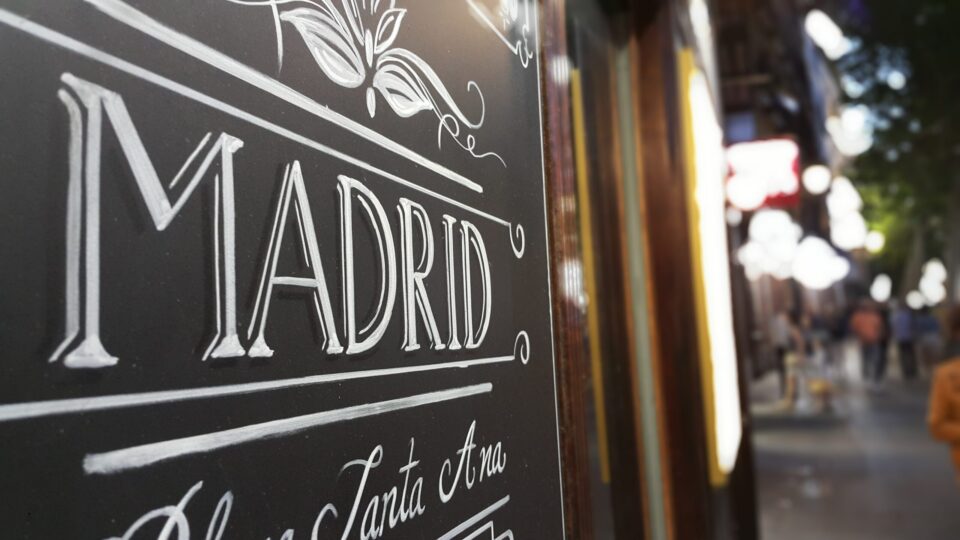The films of Pedro Almodóvar are a testament to the Madrid Movida, a countercultural movement that gave soul to this city
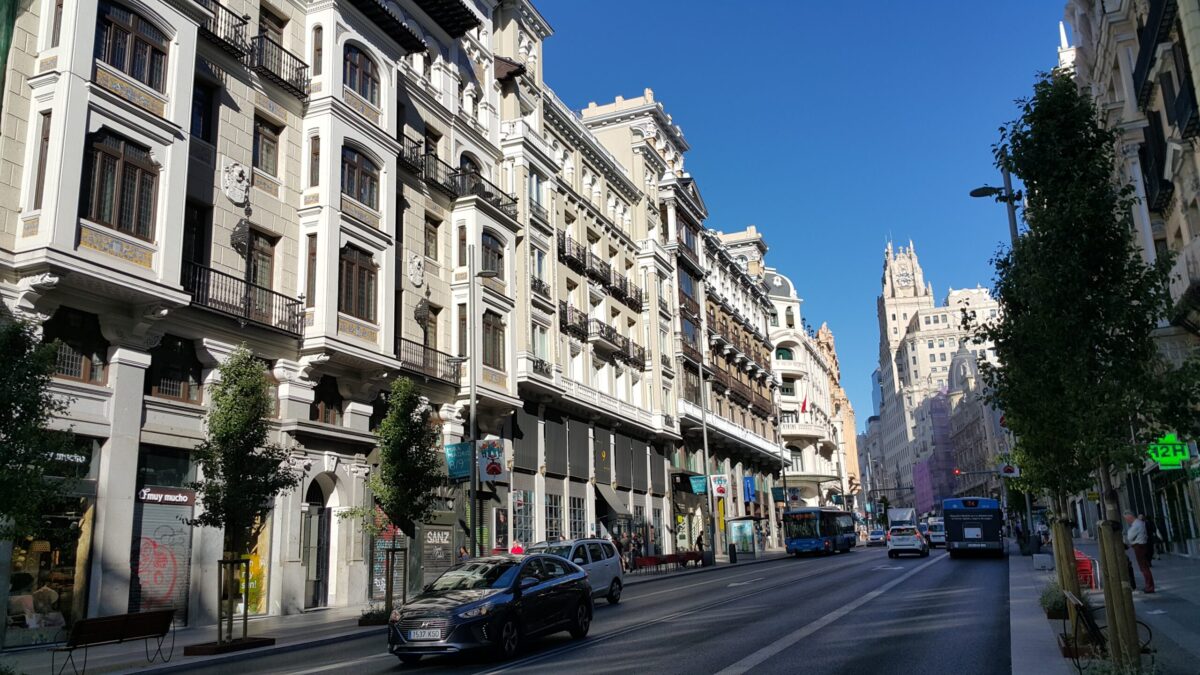 As a child of the Eighties, I find myself irresistibly drawn to that era, where Madrid and Spain stand as poignant reflections of a time past, illuminated by the incandescent glow of a unique countercultural movement known as the Madrid Movida (Movida Madrileña).
As a child of the Eighties, I find myself irresistibly drawn to that era, where Madrid and Spain stand as poignant reflections of a time past, illuminated by the incandescent glow of a unique countercultural movement known as the Madrid Movida (Movida Madrileña).
The term “Movida” itself, with its roots in motion and upheaval, carries a far more profound resonance, a romantic and tragic echo of an era marked elsewhere in Europe as the “new wave.” We too had our Yugoslav new wave (Novi talas/val), a fleeting wave confined primarily to the realms of culture, especially film and music. Yet in Spain, it delved deep into the fabric of society, penetrating the very essence of individuality.
To experience Madrid is to inevitably encounter the essence of the Movida. It is an indelible mark on the cultural and moral landscape, a seismic shift that reverberates through the corridors of time. Though extinguished long ago, with the dawn of a new era in 1991 following Franco’s dictatorial reign, its legacy endures, etched into the very soul of Spanish, and particularly Madrilenian, society.
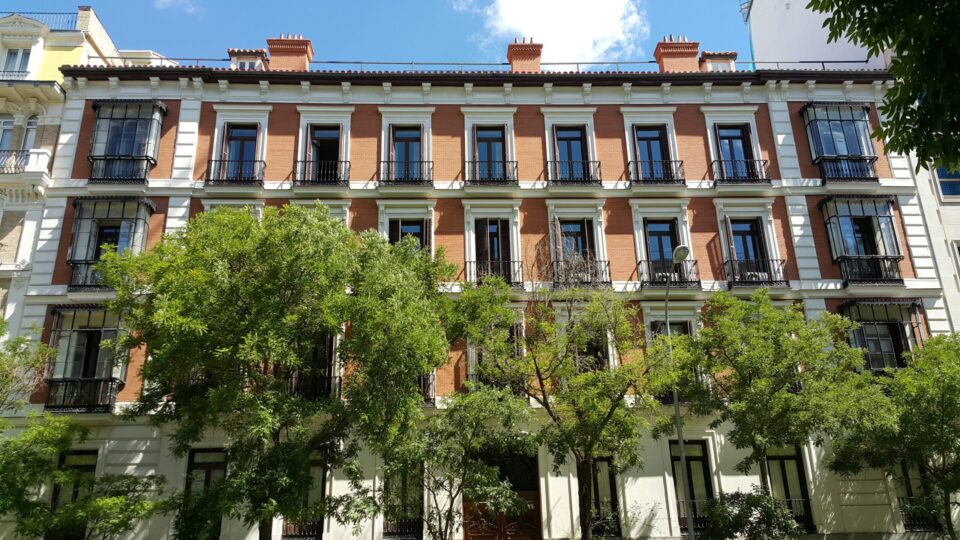 As a tourist in Madrid, one may marvel at its myriad landmarks, each a testament to the city’s storied past. Yet to depart its streets without having felt the lingering spirit of the Movida, lurking in the shadows of a tucked-away corner like Chueca, is to have merely scratched the surface of its essence. For the essence of Movida lies not merely in its visible remnants, but in the intangible embrace of its ethos – a liberation from the shackles of a fascist, traditional, quasi-moral, and Catholic society, a leap into the embrace of all forms of desire and passion.
As a tourist in Madrid, one may marvel at its myriad landmarks, each a testament to the city’s storied past. Yet to depart its streets without having felt the lingering spirit of the Movida, lurking in the shadows of a tucked-away corner like Chueca, is to have merely scratched the surface of its essence. For the essence of Movida lies not merely in its visible remnants, but in the intangible embrace of its ethos – a liberation from the shackles of a fascist, traditional, quasi-moral, and Catholic society, a leap into the embrace of all forms of desire and passion.
It was a revolution incarnate, a total transformation that shattered societal norms and unleashed the raw essence of human freedom in a manner almost anarchistic and destructive. The Plaza de Dos de Mayo in the Malasaña district stands as a sacred monument to its genesis, where in 1976, during the celebration of the uprising against French occupation, two young souls shed their inhibitions atop the monument to Spanish insurgents. This act, viewed as the dawn of the Movida, signaled a definitive rupture with Franco’s legacy, heralding an era of artistic and societal renaissance.
Movida is an indelible mark on the cultural and moral landscape, a seismic shift that reverberates through the corridors of time
In the ensuing years, the movement garnered fervent disciples, nurtured by the guiding hands of visionary artists who championed its cause and stoked its flames, transforming it from a mere movement into a cultural phenomenon, forever altering the course of history.
Pedro Almodóvar
Pedro Almodóvar stood as one of their most prominent figures. In all his films, Madrid itself takes on a leading role, a city adored unabashedly by the artist, its streets serving as primers of Movida in its nascent stages.
Particularly, his film “What Have I Done to Deserve This?” harbors subtle echoes of the Movida. Gloria, portrayed by the illustrious Carmen Maura, is a tragic figure stifled by a dysfunctional and traditional family. Her rejection of societal constraints leads her down a path of unconditional personal freedom, only to culminate tragically as she becomes the murderer of her husband, leaving her underage, homosexual son to a pedophile dentist.
Almodóvar’s favored characters reside on the fringes, hailing from the lower middle class, flawed and fallen. Among them are prostitutes, homosexuals, transvestites, all wandering the streets of Madrid in search of their own happiness. His films brim with raw emotions, with campy characters unshackled from fear, striving to find slivers of joy in fleeting indulgences.
Villa Rosa
Villa Rosa holds a special place in Madrid’s cultural landscape, particularly within the context of Pedro Almodóvar’s films and the Movida movement. Situated on the vibrant Plaza de Santa Ana, Villa Rosa is a traditional flamenco bar that has become an iconic symbol of Spanish culture and entertainment.
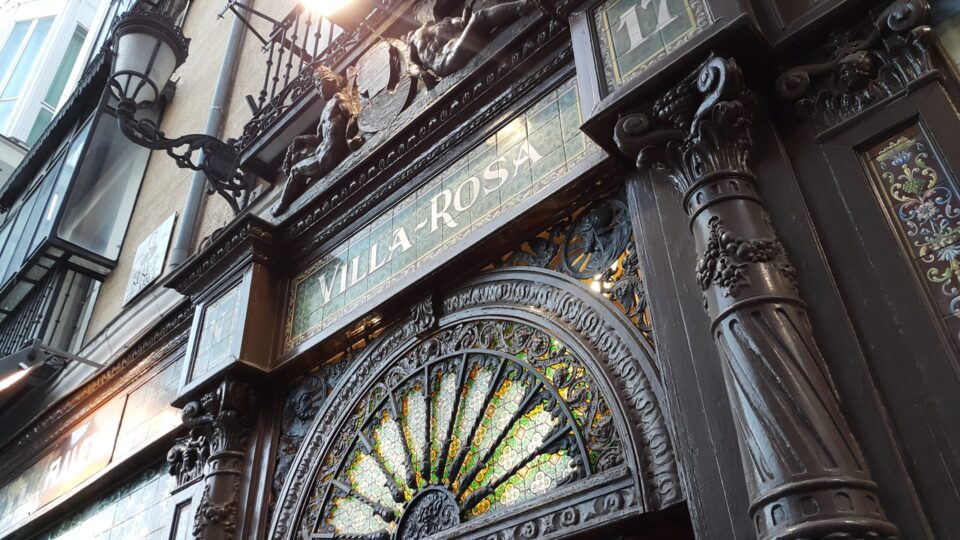 Founded in the early 20th century, Villa Rosa has a rich history of hosting flamenco performances, live music, and social gatherings. Its intimate atmosphere, adorned with colorful tiles and intricate décor, transports visitors to the heart of Spain’s flamenco tradition.
Founded in the early 20th century, Villa Rosa has a rich history of hosting flamenco performances, live music, and social gatherings. Its intimate atmosphere, adorned with colorful tiles and intricate décor, transports visitors to the heart of Spain’s flamenco tradition.
For the essence of Movida lies not merely in its visible remnants, but in the intangible embrace of its ethos – a liberation from the shackles of a fascist, traditional, quasi-moral, and Catholic society, a leap into the embrace of all forms of desire and passion
In the realm of cinema, Villa Rosa gained prominence through its inclusion in Pedro Almodóvar’s acclaimed film “High Heels” (1987). The film features unforgettable scenes set in the nightclub, showcasing the electrifying energy and passion of flamenco performances against the backdrop of Villa Rosa’s iconic stage.
For cinephiles and fans of Almodóvar’s work, visiting Villa Rosa offers a unique opportunity to step into the world of his films and experience firsthand the ambiance and allure of Madrid’s nightlife. Whether enjoying a traditional flamenco show or simply soaking in the atmosphere of this historic venue, Villa Rosa continues to captivate audiences with its timeless charm and cultural significance.
Where Exactly is Pepa’s Balcony?
The building housing the beautiful penthouse where Pepa from the film “Women on the Verge of a Nervous Breakdown” (1988) resided is located at Montalbano Street, number 7. It stands just behind the Post Office building, towards Retiro Park. Pepa’s balcony, the size of a small football field where she tends to her flowers and waters them with a garden hose, however, is not part of this penthouse. It is situated nearby, in the Principal Hotel building (Calle Marqués de Valdeiglesias 1).
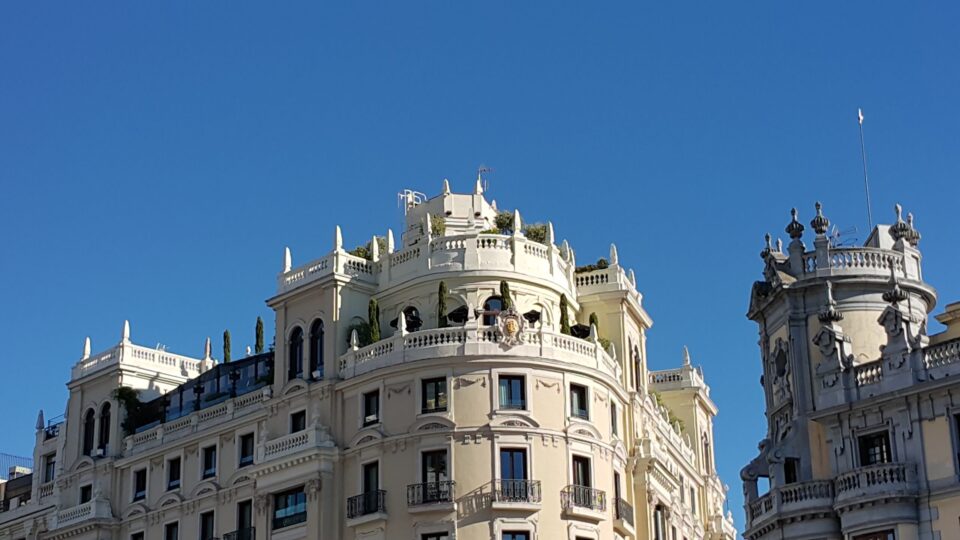 Segovia Viaduct
Segovia Viaduct
Today, the bridge (viaduct) beneath Almudena Cathedral is shielded by glass barriers to prevent suicides. For years, this bridge stood as a symbol of despair. Almodóvar depicted Madrid’s darker side in the film known here as “The Brief Lovers” (2013). Alba, portrayed by Paz Vega, attempts suicide by jumping from the Segovia Viaduct.
Almodóvar’s favored characters reside on the fringes, hailing from the lower middle class, flawed and fallen
Almodóvar presented Madrid in his unique way. He didn’t film at the popular tourist spots. Only the Main Square (Plaza Mayor) appears prominently in important scenes in the film “The Flower of My Secret.”
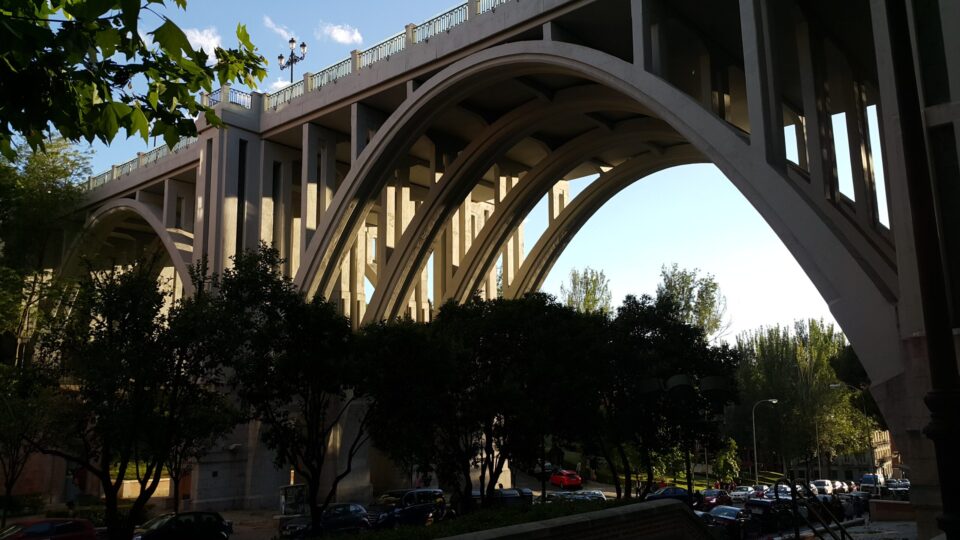 Museo Chicote
Museo Chicote
Many locations in Madrid played significant roles in Almodóvar’s films, but one surpasses even this artist and the entire Movida movement. It’s a seemingly ordinary cocktail bar in the heart of the city, on the fashionable Gran Vía street. Museo Chicote, a bar established in the early 1930s, became the avant-garde gateway to the city. Intellectuals and celebrities from Ava Gardner and Grace Kelly to Sophia Loren and Aristotle Onassis adored this place. It was always a cult spot, even celebrated by many Hispanic poets, immortalizing it. Like Madrid’s very own navel, Museo Chicote readily embraced its new role in the rebirth during the Movida era. This bar became a gathering place for artists, supporters, and admirers of Movida, including Almodóvar himself, who paid homage by giving it a significant role in one of his films. Museo Chicote is where Judith García, portrayed by Blanca Portillo in the film “Broken Embraces” (2009), reveals her big secret to the world after a gin tonic. This bar is precisely that—a place where numerous Madrid artists, fueled by alcohol and their uninhibited creativity, managed to sober up and shatter the society trapped in the stupor of Catholic and right-wing conservatism.
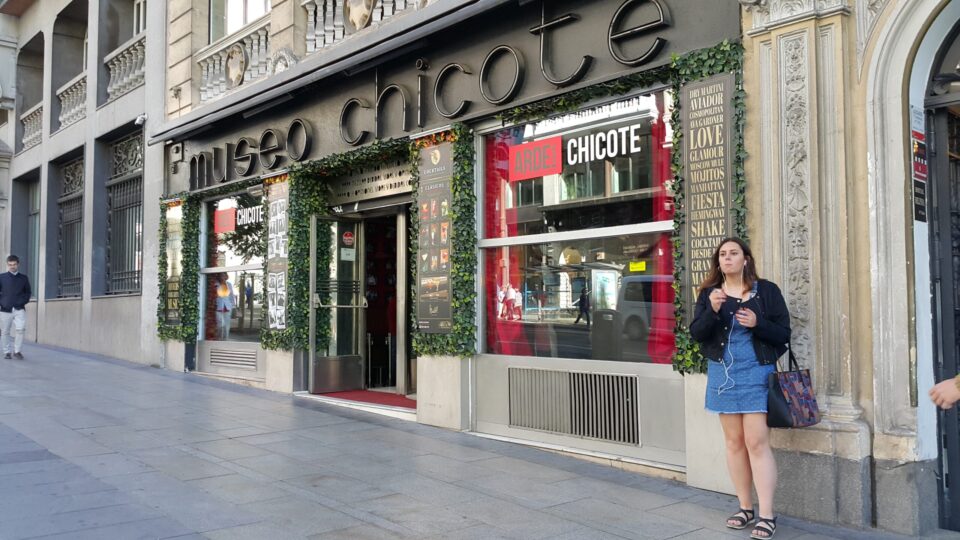 Lavapiés
Lavapiés
The best place to catch Pedro Almodóvar’s films is the Madrid cinema Cine Doré, which played a significant role in many, including “Talk to Her.” Nestled not far from the Anton Martin station lies Lavapiés, a bohemian neighborhood. If Chueca symbolized liberation, Lavapiés today embodies its outcome – an anarchic-revolutionary hub teeming with non-commercial theaters, cinemas, and taverns where a new rebellion burgeons, this time against colonialism, banking capitalism, and consumer conformism. In one of his latest film “Pain and Glory,” Pedro delves even deeper into Lavapiés, presenting a monodrama at Sala Mirador as a homage to all he has done and stood for. Thus, Lavapiés becomes a new symbol of this master creator’s Madrid. It’s either the end of the Movida (and the world) or perhaps its renewal.
Círculo de Bellas Artes
As a finale to Almodóvar’s Madrid, we unveil one of the city’s most exquisite spots. The Círculo de Bellas Artes, a cultural center on the aforementioned Gran Vía, is where Cecilia Roth’s son dashes out in “All About My Mother” after the performance of “A Streetcar Named Desire,” meeting his tragic fate.
Protected by the state as a national monument, its rooftop hosts a stunning bar offering one of the city’s most breathtaking views.
Like Madrid’s very own navel, Museo Chicote readily embraced its new role in the rebirth during the Movida era
Madrid may not boast the tourist allure of Barcelona or Paris, where landmarks are renowned, painted, and easily discernible. Yet, it’s a place you’ll never tire of exploring and discovering. Its essence lies in its many secrets and historical narratives, with each visit offering a new adventure. Here, in the heart of Spain, where the rhythms of flamenco echo through the streets and the aroma of tapas fills the air, Madrid beckons travelers to delve deeper, beyond the surface allure of iconic sights. It’s a city of hidden gems waiting to be unearthed, of intimate cafes tucked away in quiet plazas and centuries-old taverns where stories linger in the air like whispers from the past. In Madrid, every cobblestone pathway is a pathway to discovery, every turn a journey into the soul of a city steeped in history, culture, and endless possibility. And it’s within this rich tapestry of experiences that Almodóvar finds his muse, capturing the essence of Madrid in all its complexity and charm.
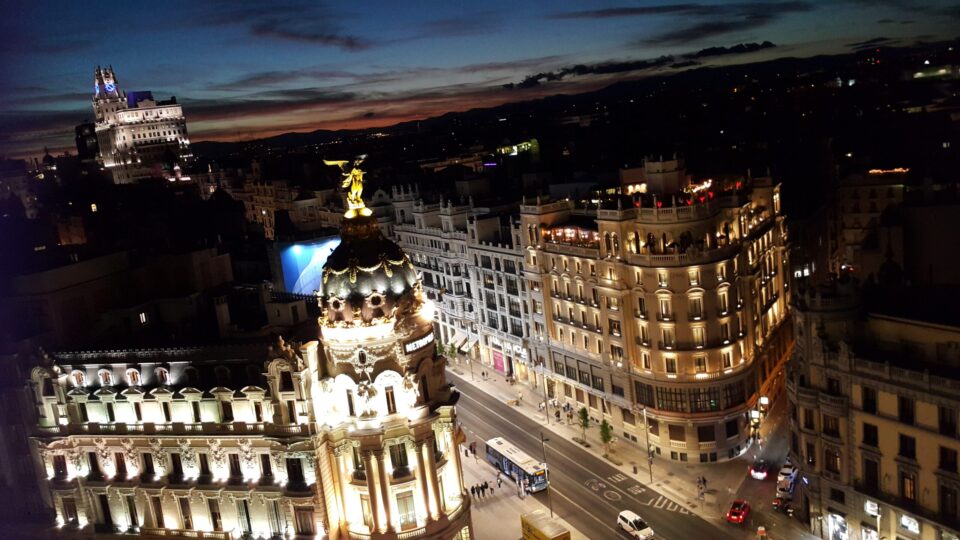 Pedro Almodóvar’s Madrid is a wholly new city, concealed behind the veneer of modern architecture, a city narrating its potent tale – the same one Pedro unfolds in all his films. It’s a story of discovery, conquest, freedom, and life. In the vibrant tapestry of Madrid’s streets, where each corner whispers secrets of the past and present, Almodóvar finds inspiration for his cinematic masterpieces. His lens captures not just the physical landscape but also the intangible essence of the city – its pulsating energy, its complex characters, and its ever-evolving identity. Through his films, Madrid emerges as a character in its own right, a protagonist entwined with the hopes, dreams, and struggles of its inhabitants. And like the city itself, Almodóvar’s storytelling is dynamic, colorful, and unabashedly authentic, reflecting the diverse tapestry of human experience found within Madrid’s bustling streets.
Pedro Almodóvar’s Madrid is a wholly new city, concealed behind the veneer of modern architecture, a city narrating its potent tale – the same one Pedro unfolds in all his films. It’s a story of discovery, conquest, freedom, and life. In the vibrant tapestry of Madrid’s streets, where each corner whispers secrets of the past and present, Almodóvar finds inspiration for his cinematic masterpieces. His lens captures not just the physical landscape but also the intangible essence of the city – its pulsating energy, its complex characters, and its ever-evolving identity. Through his films, Madrid emerges as a character in its own right, a protagonist entwined with the hopes, dreams, and struggles of its inhabitants. And like the city itself, Almodóvar’s storytelling is dynamic, colorful, and unabashedly authentic, reflecting the diverse tapestry of human experience found within Madrid’s bustling streets.
Author & photos by Dragan Nikolić
